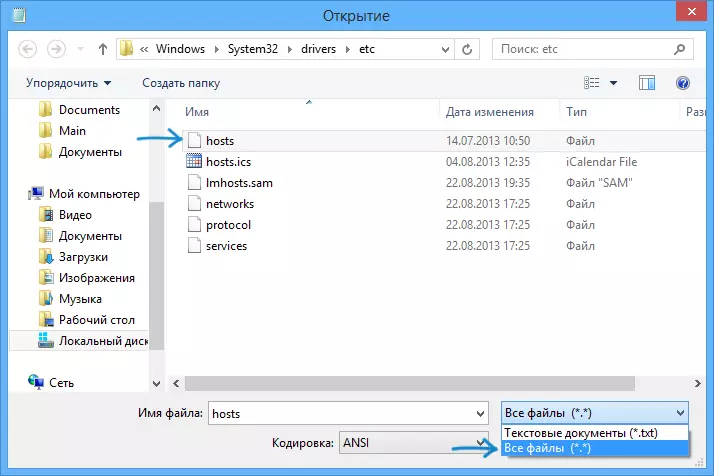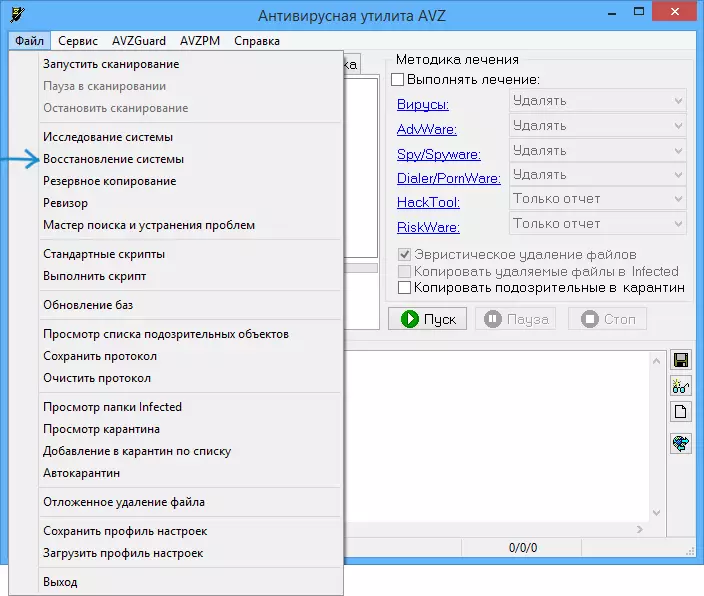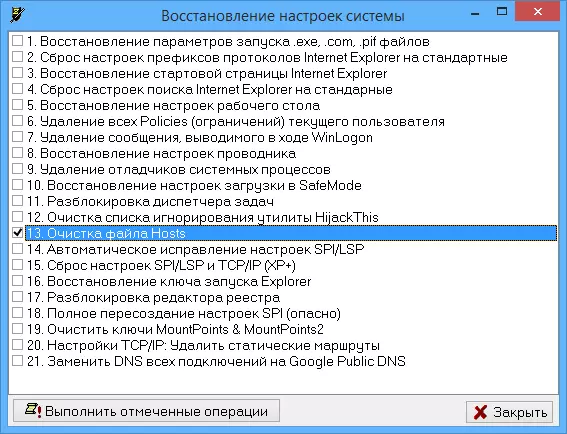
There are many ways to correct the Hosts file in Windows and all of them are simple enough. Consider three such methods that most likely will be enough to bring this file in order. Update 2016: Hosts file in Windows 10 (how to change, restore where it is located).
Hosts Correction in Notepad
The first way we will look at - how to fix the Hosts file in notepad. Perhaps this is the easiest and fastest way.
First, start the notepad on behalf of the administrator (it is necessary, otherwise the HOSTS will not last), for what:
- In Windows 7, go to "Start" - "All Programs" - "Standard", right-click on notepad and select "Run on behalf of the administrator".
- In Windows 8 and Windows 8.1 on the initial screen, start typing the first letters of the word "Notepad", the search bar opens. Right-click on the notepad and select "Run on the administrator."

The next step is to open the hosts file, for this in the notepad, select "File" - "Open", at the bottom of the Opening window. Switch with ".txt text documents" to "All Files", go to folder C: \ Windows \ System32 \ Drivers \ etc And open the HOSTS file.

Please note that if you have several HOSTS files, you need to open one that without any extension.
The last step is to remove all the extra lines from the HOSTS file, or simply insert its original content to a file that you can copy, for example, from here (and at the same time, and see what lines are extra).
# Copyright (C) 1993-2009 Microsoft Corp. # # This is a sample hosts file Used by Microsoft TCP / IP for Windows. # # This File Contains The Mappings of IP Addresses to Host Names. Each # Entry Should Be Kept On An Individual Line. The IP Address Should # Be Placed in the CorreSponding Host Name. # The IP Address and The Host Name Should Be Separated by At Least One # Space. # # Additionally, Comments (Such As These) May Be Inserted on Individual # Lines or Following the Machine Name denoted by A '#' Symbol. # # For example: # # # # # For example: # # 102.54.94.97 rhino.acme.com # Source Server # 38.25.63.10 x.acme.com # X Client Host # Localhost Name Resolution Is Handled Within DNS ItSelf. # 127.0.0.1 Localhost # :: 1 LocalhostNote: The hosts file can be empty, it is normal, it means nothing to correct. The text in the HOSTS file can be in Russian and in English, it does not play roles.
After that, select "File" - "Save" and save the fixed hosts (it may not be saved if you launched a notepad not on behalf of the administrator). It is also desirable after this action to restart the computer so that the changes take effect.
How to fix hosts in avz
Another simple way to fix hosts is to use AVZ anti-virus utility (it can not only this, but within the framework of this instruction only the hostes is considered).
You can download AVZ for free from the official site of the developer http://www.z-oleg.com/secur/avz/download.php (search on the right side of the page).

Unpack the archive with the program and run the AVZ.EXE file, after which in the main program menu, select File - "Restore System" and check one "Clearing Hosts File".

Then click "Run marked operations", and upon completion, restart the computer.
Microsoft Fix IT utility to restore HOSTS file
And the last way - to go to the http://support.microsoft.com/kb/972034/en page dedicated to the recovery of the HOSTS file and download the Fix IT utility there to automatically bring this file to the original state.

In addition, on this page you will find the original contents of the HOSTS file for various operating systems.
